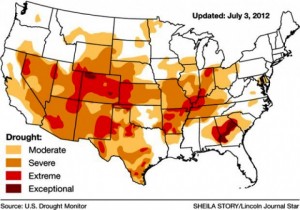New Zealand Joins Ecuador in Granting Rights to A Body of Water
Introductory Note: In “The Gazette’s Great Water Article,” Gene Franks wrote: “The degradation of water in modern America has been cruel and complete. Water has meaning only to the extent that it is useful to us. We speak of animal rights and children’s rights, meaning the rights of animals and children, but “water rights” refers only to the right of humans to exploit water. Water itself has no rights, no existence apart from our purposes.” It is encouraging that at least two countries, New Zealand and Ecuador, have seen fit to officially recognize the legal rights of water.–Hardly Waite, Gazette Senior Editor.
From the dawn of history, and in cultures throughout the world, humans have been prone to imbue Earth’s life-giving rivers with qualities of life itself — a fitting tribute, no doubt, to the wellsprings upon which our past (and present) civilizations so heavily rely. But while modern thought has come to regard these essential waterways more clinically over the centuries, that might all be changing once again.
Meet the Whanganui. You might call it a river, but in the eyes of the law, it has the standings of a person.
![Whanganui_River.jpg.492x0_q85_crop-smart[1]](http://purewatergazette.net/blog/wp-content/uploads/2012/09/Whanganui_River.jpg.492x0_q85_crop-smart1-300x200.jpg)
New Zealand’s Third Largest River, the Whanganui, Has Been Granted the Rights of “Personhood”
In a landmark case for the Rights of Nature, officials in New Zealand
recently granted the Whanganui, the nation’s third-longest river, with legal personhood “in the same way a company is, which will give it rights and interests”. The decision follows a long court battle for the river’s personhood initiated by the Whanganui River iwi, an indigenous community with strong cultural ties to the waterway.
Under the settlement, the river is regarded as a protected entity, under an arrangement in which representatives from both the iwi and the national government will serve as legal custodians towards the Whanganui’s best interests.
“Today’s agreement which recognises the status of the river as Te Awa Tupua (an integrated, living whole) and the inextricable relationship of iwi with the river is a major step towards the resolution of the historical grievances of Whanganui iwi and is important nationally,” says New Zealand’s Minister for Treaty for Waitangi Negotiations, Christopher Finlayson. (more…)




![JP-TALAPIA-3-articleInline[1]](http://purewatergazette.net/blog/wp-content/uploads/2012/09/JP-TALAPIA-3-articleInline1.jpg)
![Whanganui_River.jpg.492x0_q85_crop-smart[1]](http://purewatergazette.net/blog/wp-content/uploads/2012/09/Whanganui_River.jpg.492x0_q85_crop-smart1-300x200.jpg)
![lakevostokdrilling[1]](http://purewatergazette.net/blog/wp-content/uploads/2012/09/lakevostokdrilling1-300x225.jpg)
![lake_vostok_nsf_h[1]](http://purewatergazette.net/blog/wp-content/uploads/2012/09/lake_vostok_nsf_h1-300x189.jpeg)

![rio-20-united-states-drought-dry-dock_56422_600x450[1]](http://purewatergazette.net/blog/wp-content/uploads/2012/09/rio-20-united-states-drought-dry-dock_56422_600x4501-300x225.jpg)

![120702134824-large[1]](http://purewatergazette.net/blog/wp-content/uploads/2012/09/120702134824-large1-300x224.jpg)
![101full[1]](http://purewatergazette.net/blog/wp-content/uploads/2012/09/101full1-300x224.jpg)
